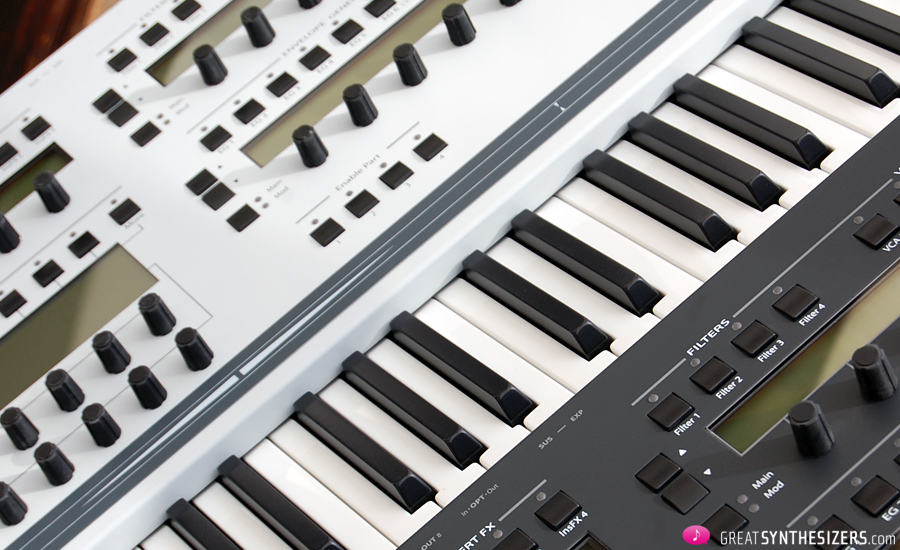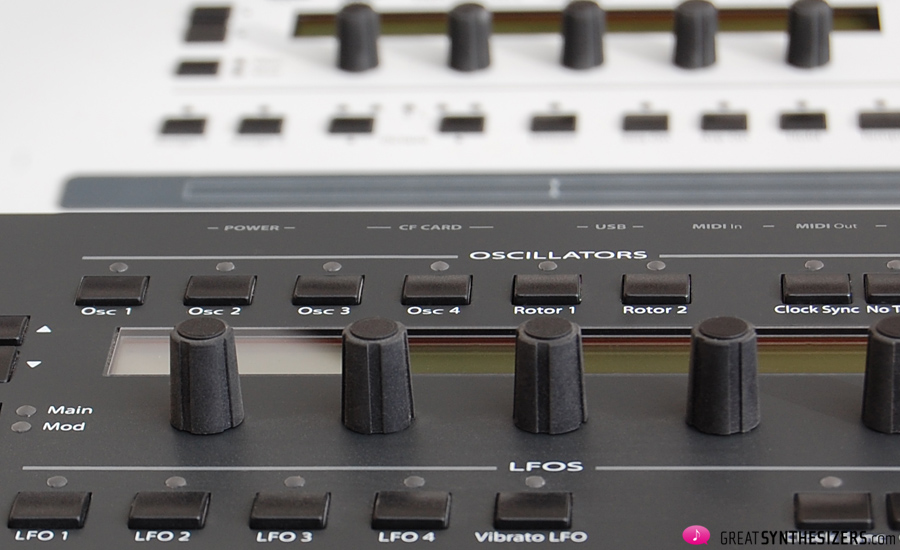Operating System 1.4.0.: a real Christmas present for the Solaris. John Bowen and programmer Jim Hewes did all the arduous work to allow this significant update to become reality.
The new OS 1.4.0 includes SysEx functionality for all (!) parameters, improved modulation- and parameter-settings, and a spectacular “Poly Chain” feature. The latter features allows you to have multiple Solaris slaved together for increased polyphony. Good old Kawai K3 and K3M synthesizers offered a similar function (“voice spillover”) way back in 1986.
Here’s the new features added with v1.4.0 OS:
1) A reworking of the voice handler for significantly better performance.
2) All parameter communication has been completed to work as SysEx commands. NRPNs are no longer supported (and were never fully implemented previously anyway). A complete SysEx implementation document is available online in the User Guides section.
3) A “Poly Chain” mode has been added, so you can have multiple units slaved together for increased polyphony (i.e., 20 notes from 2 units).
4) Added the new parameter “LoadSamp” on the System page 1/2. When enabled, the Solaris will automatically load the first sample pool on bootup.
5) The following parameters were moved from the Home page 3/4 to the System page 2/2: VTIntensity, VTOffset, ATIntensity, ATOffset. Renamed some of the labels for the pedal parameters. Renamed VTIntens and ATIntens to VTCurve and ATCurve (because response curves are what they actually are).
6) The following parameters are now saved to the global init file: Polychain, VTCurve, VTOffset, ATCurve, ATOffset. This means they are no longer stored per preset.
7) Improved display and editing of time values above 1 second.
8 ) Since EG6 controls the overall shape of the sound, the Solaris now boots up with EG 6 selected.
9) After samples are loaded, the wave number is always reset to 1 in the Oscillator Wave display.
10) An extra parameter was added for the Osc modulation amount parameter when the destination is LinFM. This separated it from the amount parameter for Shape. Older presets will sound correct IF the destination is set to Shape. However, if the the preset uses destination LinFM, when the preset is loaded by an older OS the sound will not be the same because the Osc modulation amount will not be correct. Also note there is no way to make such a preset backward compatible by setting the Shape amount because the ranges for the two amount parameters are different.
11) Parameters for setting the MIDI Device ID and transmitting the current preset buffer added (important for Poly Chain mode).
12) Improved encoder acceleration for the following parameters: LFO rate, EQ frequency, Phaser Offset, Oscillator and Rotor NoTrack frequency.
(Source: http://forums.johnbowen.com)
——————————————————————————————————————–
Links:



